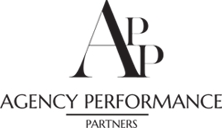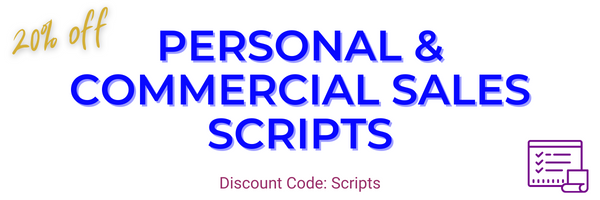When we start working with clients, we quickly discover that there is no sales process. Agents are trained on how to quote, but there is not enough emphasis or focus on a defined sales process.
In reality, agencies need a written, practiced sales process that everyone can lean on. When we focus on quoting insurance, that’s merely a process that’s easiest for us. We leave out a key factor – the client!
With a proper insurance sales cycle process, you can combine quoting, pre-qualifying, and the sales cycle altogether. Quoting doesn’t make the agency any money (in fact, it costs you money). Binding coverage has to be the ultimate goal!
APP Update
What To Include In Your Sales Cycle Process
For many insurance agents starting a process is the hardest part. You may have only worked at your office or had limited experience at other agencies. How do you know if your strategy is the best?
We recommend you build the proper process for your agency and your dream client. To get started, we have an outline of a few questions you can ask yourself to help you get started.
Who Should New Opportunities Go To
This may sound silly, but an organization of how to assign leads is critical. We find all too often in our secret shopper calls that lead go to voicemail. You should have an identified process of who gets the next lead and, if no one is available, how to handle that new opportunity. In many instances, the lead may not wait for your team to call them back.
Who Is Your Dream Client? Who Do You Turn Away?
There tend to be mixed messages at many agencies. The message is: we need to grow, but don’t write everyone’s insurance. While both are true many team members, need more guidance. You should start your process by doing the following:
- Identifying clearly who you will turn away and why (It also helps if there are some scripts on how to turn someone away professionally)
- Identify who is conditionally approved: this may be a bit trickier. These are people who are in the gray area. We may want leadership approval or write them only if they are on automatic payment, written we a few carriers and, or take the coverage standards we recommend
- Clearly identify your dream client: This is the persona you want to build all your processes around. You want to identify their biggest concerns, challenges, and pain points and then solve them in your sales process.
Who Are Your Core Carriers
Where possible, we want to feed your core carriers. To have a great sales process, you really need to clarify where to place business that is best for the agency and client.
Agency Standards
Agencies need to start with a minimal standard of product. You should include exactly what you will quote at a minimum level. This takes the guesswork out of it for the agent. The client may decline the coverage but this is where you start the quote.
Turn Around Time Targets
When there is no target everyone applies their own approach. The agency should designate the turnaround time to get back to a new lead and deliver a quote. When an agent cannot meet that target they need to raise their hand.
Follow Up Protocol
I can tell you from personal experience, agencies need a follow-up protocol. If you can’t get to a “yes”, how many follow-ups and when should the agent proceed? Too often this is left up to chance or how much time an agent has. Instead, we want to share with them the vision for the number of follow-ups, frequency, and when to close a lead out.
Once you have nailed down these objectives it’s time to get to work building your sales process. We have outlined our top recommendations for your team’s insurance sales cycle process.
“It’s not about having the right opportunities.
It’s about handling the opportunities right.” -Mark Hunter
10 Insurance Sales Cycle Process Considerations
Now that you have a few potential hurdles nailed down, let’s help you build your insurance cycle sales process.
Greeting the Opportunity & Getting It to the Right Sales Agent
A new opportunity that is actively seeking out insurance should never be placed in voicemail. When someone wants a quote, we must rise to the occasion.
After all, isn’t that what we do, sell insurance? In our secret shopper program, we found that 23% of callers were placed in voicemail. So what’s the solution?
- Get a basic quote sheet that anyone can start completing.
- Have an alert system when there is a new lead, and no one is available so team members can wrap up their calls to get to the lead
- Have a flowchart that depicts who handles opportunities and in what order
New Opportunity Greeting
We find that agents often go into quote mode and miss valuable rapport-building and pre-qualifying opportunities.
We want to slow the call down (remember when the opportunity is on the phone with you, they aren’t on with another agent!) and add in 3 minutes of rapport building and pre-qualifying.
This can save agents valuable time. Here are some things to ask:
- How did you hear about us?
- Why are you shopping today?
- What’s important to you in selecting your agent?
- Other than price, how will you make your decision?
- How many other agents have you called?
- Do you have any insurance policies other than the X you are looking for?
You also want to take the time to ask any disqualification questions these may be (they are different for every agency):
- Do you have current coverage?
- Are you interested in getting a quote on X in addition to Y?
- In order to proceed, we would need to make sure you are comfortable with paying in full or EFT payments, as that is how many of our companies are set up.
Lastly, you need to take the opportunity to share why to do business with you and the agency. This is a step we often miss!
If I am going to get three quotes on my insurance, the person who states their value will win the business. We have to remember we are critical parts of the buying process. Clients do not know what we do not tell them.
Make sure you take a moment to educate clients on what an independent insurance agent is and how this can benefit them.
Build Rapport
Many sales agents do this naturally throughout the call, but it should be done upfront in the ideal insurance sales cycle process. Clients still buy from people they know, like, and trust.
When we weave it between underwriting questions, we miss a crucial strategy. The first sale we get from a customer is the exchange of time.
When we find common ground up front, we earn more of that customer’s time. More time = more opportunity.
You want to make sure to share just enough about you that they share just enough. Some common areas you find common ground include:
- Work
- Weather
- Weekends
- Pets
- Kids
- Community
Find one item and make that connection!
“No matter how many customers you have, each is an individual. The day you start thinking of them as this amorphous ‘collection’ and stop thinking of them as people is the day you start going out of business.” -Dharmesh Shah
Gathering Client Quoting Information
This can be a doozy! Carriers are asking for more and more underwriting information. Our mission (if you choose to accept it!) is how we can have a sales enablement underwriting information process. This may sound like an oxymoron to some of you, but it can happen.
Here are a few thoughts on how to cruise through information gathering:
- Don’t ask the client for a declaration page unless they have it in front of them
-
- You don’t want them calling another agent
- Most of the declaration pages are outdated (that’s why they are calling you)
- If they have it handy, ask them to take a picture and send it in (don’t make your lead scan and send it in – that is too many steps!)
-
-
- Pull up the website or tax assessor’s website
- Its easier to confirm information than to ask it
- Let the client know what you are doing so it’s not creepy
- Ask questions. This puts the client at ease
- Pull up the website or tax assessor’s website
- When a client doesn’t have the answer to an underwriting question – get creative
- Guesses are ok as long as they are confirmed before binding (let the prospect know this is a conditional quote)
- Ask questions like, was it before or after Covid?
- If someone else has the information, ask them to text that person while on the phone
We need to enable sales, but I see too many agents disabling sales by getting stuck. Be creative with the quote – remember, a quote is an estimate, and you can use your words to explain that to a client.
Earning the Opportunity To Quote It All
55% of our secret shoppers were given a quote for exactly what they asked for, nothing more and nothing less. The challenge with this is there is most likely more out there. Why leave money on the table?
Suppose they are calling you and not their current agent. That means opportunity! This is an opportunity to earn other policies. Solve the main problem but start working on the different policies as well.
This means the following:
- We do not need permission to quote renters or umbrella policies
- These should be included – the worst someone says is no thank you
- Upfront, we need to identify all the policies the client has so we can work on them we
Don’t be shy about insuring the entire account (even cross-departments). The client is better served having all their insurance with one terrific agent (aka you!)
Quoting Over The Phone or Setting Expectations
I need to be upfront for small commercial and most personal lines. I strongly advocate providing a quote over the phone. This means taking all information and getting to confirmed pricing while the client stays on the phone with you. (Someone just fell out of their chair).
Here is what you may be thinking:
- People don’t want to stay on the phone that long
- How much longer is it after you get ALL the underwriting questions
- Let the client decide
- When they are talking to you, they aren’t talking to other agents
- I need to concentrate
- When you hang up, you will get interrupted
- Struggling with what to say? Tell the client what you are doing
- The quotes in the rater are not accurate
- You are 100% correct. They are indications
- You can firm up the top carrier on the phone – if that one doesn’t work, offer another one. Call them back
- No quote is accurate until the reports are run
Quoting over the phone drives the highest closing ratio! It may seem fuzzy on how to do it. Check out the sales training course for details on how to quote over the phone.
If we can’t quote over the phone, we need to set an appointment. The one rule we have is we never ever send the quote via email unless you have presented it. People only look at the price, and you are selling value.

Quoting Options
Our cross-selling approach to new business is to always provide the lead with options. Options empower the client with choice. It’s amazing how many increases in coverage you can get when you show two options.
Options are also a sales strategy; which one do you prefer, A or B? Rather than take it or leave it, they have a choice with you which is powerful.
Here are some common options you can use:
- Coverage levels
- Carriers
- Deductibles
- With and without an umbrella policy
The idea is to get a soft yes on a proposal so you can ask for the business! In our Sales Training program we show your team exactly how to make this work (and quoting over the phone too!)
Presenting the Quote
This quote is about your hard work! You don’t want to email it to a prospect who isn’t sure what water-sewer backup is. Instead, we need to present the quote to the person, so they understand it, see the value, and can ask questions.
We recommend that you present your insurance quote in the following steps:
- Confirm you have solved their biggest challenges
- Explain the carrier & list three reasons they are great
- Identify the coverages for option 1
- Share option two and the differences
- Then state the opportunities for monthly insurance investment
- Ask them which one they prefer, A or B
I can’t state this enough: you need to give the opportunity the price last and state all your value first. The second the lead knows the pricing, you lose control.
You want to maintain control while you are presenting your options. Also, always give the client the monthly number, not the annual one. Most people are budgeted monthly, and this is critical for you to win the deal. When you are confused (or people have to do the math), you lose!
Instead, present the quote in a way that matters.
Asking For the Business
If you practice our strategy of presenting more than one option, then follow it up without presenting the quote steps, you get to the final step of which options does the buyer prefer? This is an easy way to ask for business without turning into the Wolf of Wall Street. This opens up dialog, and you will most likely get a soft yes by simply saying: Which of the two options do you feel is best for you?
From there, you can ask any of the following closing statements:
- What’s the best email to send the application?
- Would you prefer to set up the download payment via credit card, ACH, or electronic check?
- When did you want to make this policy effective?
See, the ask should come naturally as the next step rather than a big, built-up, ‘will you marry me?’ type question.
Follow Up
We touched upon this in the first section, where you need to identify your follow-up strategy. Everyone in the agency should have an agreed-upon follow-up process. This includes the number of follow-ups, format, and what to say.
If you can’t get a yes on the phone, you must at least get a confirmed date and time to follow up. You don’t want to leave it to chance set the next date.
Here is our recommended follow-up strategy:
Day 1 (day of confirmed date and time)
- Follow up at a set time
- 2 Hours Later (if not connected)
- 4 Hours Later (if not connected)
Yes three times in one day – they had an appointment, you want to win the deal
Day 3: Follow-up
Day 5: Follow-up
Day 7: Follow-up (break up)
The breakup is the greatest sales strategy ever! It allows you to educate the client that you will need to close their file if you do not hear back from them.
Curious about how these calls are scripted? We can’t give it all away, check out our Agency School or Sales Training Program.
Conclusion
Insurance agency teams with a straightforward sales process will win. When everyone knows what to do and the clear expectation of how it’s a winning combination. Your agency may not have the time or strategy to train on. But that’s why we are here to help!









